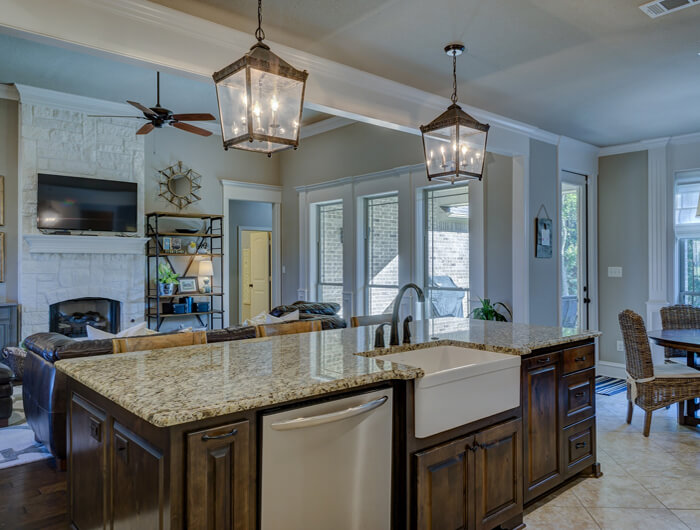Furnished vs unfurnished: What landlords need to know

Whether you’ve bought a new investment property for your portfolio or are moving in with a partner but will be renting your home rather than selling, one of the main things you’re going to need to think about is whether to let your property furnished or unfurnished.
There’s no right or wrong answer regarding furnished and unfurnished property.
But as a landlord, there are things you need to know, as well as potential maintenance and cost implications to letting your property furnished instead of free from furniture.
In this guide, easylet residential provides expert advice to landlords.
What’s the difference between furnished and unfurnished
Let’s start with the basics.
A furnished property includes items like beds, sofas, wardrobes, tables and other key equipment like a cooker or washing machine.
Unfurnished properties don’t include furniture and require the tenant to provide their own.
There can be some confusion (especially among first-time landlords) about what should be included in an unfurnished property.
Despite what the name implies, an unfurnished property does need to include a few things.
Things like kitchen and bathroom fittings, flooring (whether carpets or wooden floor), curtains or blinds and a cooker are all things you should include in an unfurnished property.
Some unfurnished properties also include some kitchen equipment like a fridge or freezer – but not all do.
Should you let a property furnished or unfurnished?
This is the big question for landlords, and, as we’ve said, there’s no absolute right or wrong answer.
The decision will typically come down to balancing what the tenant wants and what costs or responsibilities you’re willing to take on as a landlord.
Why would you let a property furnished?
Some tenants, particularly young tenants who are moving out for the first time, might prefer a property that already has furniture. These tenants likely don’t have their own furniture to move in and probably don’t have the money to buy it.
By letting a property furnished, you could open it up to a wider tenant pool.
If you’re letting your own home (like if you’re moving in with a partner), it could also be a hassle to move your existing furniture out.
And you could lose money if you must put furniture in storage or give it to a charity shop if you can’t sell it (especially if the furniture is still relatively new).
Also, by including furniture in the property, you could charge more of a premium on your monthly rent, as tenants won’t face the additional cost of buying new furniture if they don’t already have any.
Why would you let a property unfurnished?
While it might be more straightforward in the short term to let your property furnished if you have furniture in place, it can create some issues.
The main issue as a landlord is that you are responsible for maintaining and repairing any furniture you include in the rental agreement.
If a sofa breaks, you’ll need to either fix it or pay to have it replaced.
If the fridge or freezer malfunctions, you’ll have to arrange any repairs or replace the equipment.
This is because you’ve retained responsibility for these costs by providing the furniture as part of the tenancy.
Letting a property unfurnished relieves you of this issue, and the tenant becomes responsible for the upkeep of any furniture they move in.
You’ll still be responsible for major issues like the upkeep of the gas, boiler and structural integrity of the building, but the furniture belongs to the tenant and is theirs to deal with.
Another cost to consider is your insurance.
As a landlord, you’ll need to get landlord’s insurance which covers you against damage or repairs to the building, as well as any owed rent.
If you include furniture in the lease, you’ll need contents insurance to cover any damage or loss.
If you let a property unfurnished, you’ll still need landlord’s insurance, but you won’t need to worry about the contents as this will fall to the tenant to arrange.
Letting a property unfurnished could also help attract longer-term tenants too.
Any tenant who moves into your property with their own furniture is likely to have a longer-term commitment to staying at the property (even if just because moving quickly means arranging to have all their furniture moved again).
For instance, families tend to have their own furniture that they’ll move from home to home, and if they’ve got kids, they’re not likely to move regularly.
So, depending on the market, unfurnished properties can attract better tenants – or at least tenants willing to sign more extended lease agreements, which gives you a secure rental income.
Understand the local market before renting your property
A lot of your decision will be based on the local market and what kinds of properties tenants are looking for.
While you might like the idea of letting a property fully furnished, it could cut you off from tenants who prefer to move their furniture in.
Similarly, you might not want the hassle of moving furniture in for tenants, but if the market is full of people looking for furnished properties, you’ll have a hard time getting someone to move in.
The best thing to do is to talk to an expert letting agent with knowledge of the local market.
They’ll be able to give you an idea of the type of tenant you could attract and help you decide whether a furnished or unfurnished property is the way to go.
Suggested Read: What to Think About While House Searching
